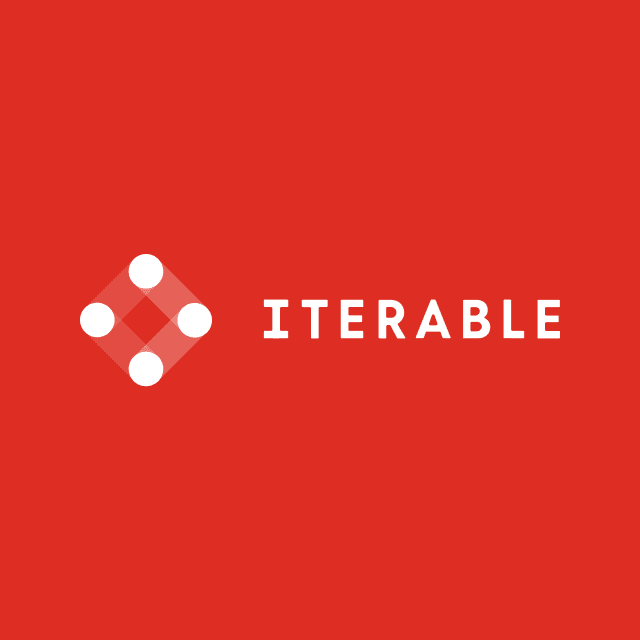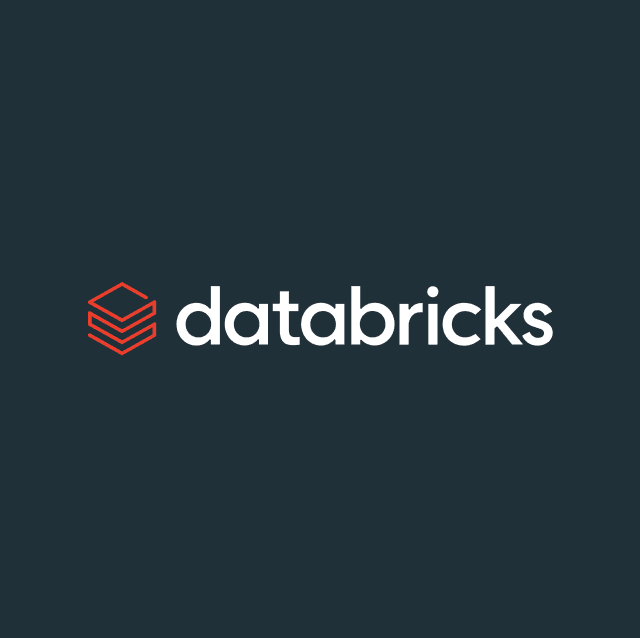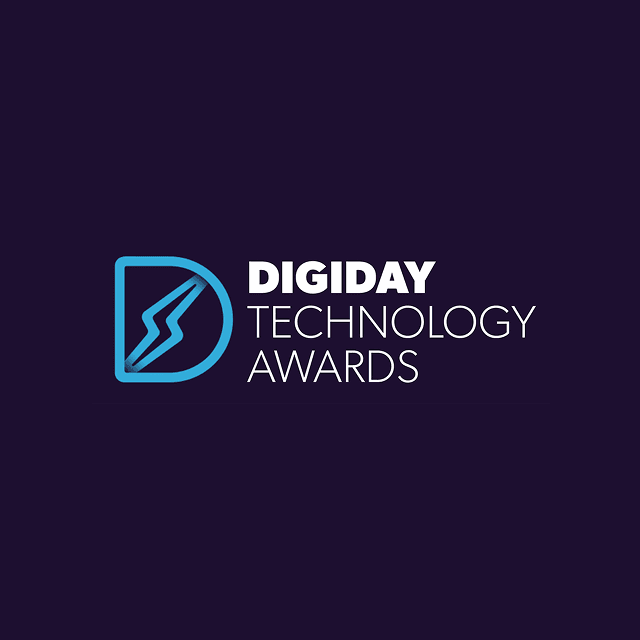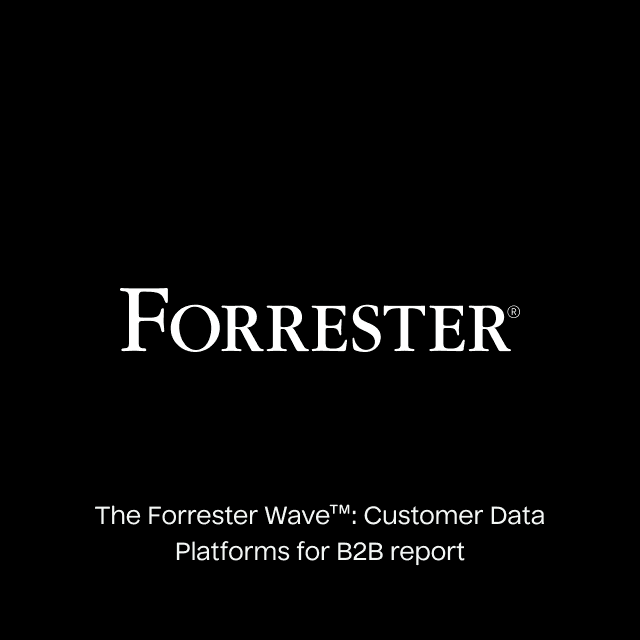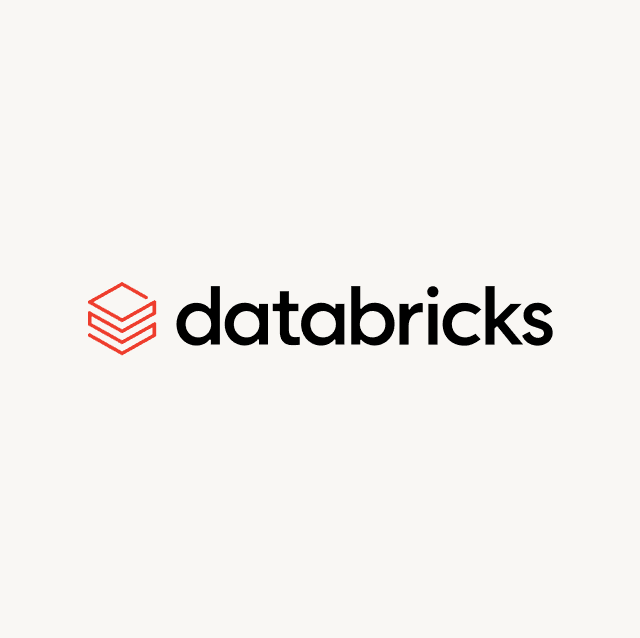We talk to CRM marketing teams every day, and one of the most common frustrations we hear is being forced to choose between two imperfect paths: high-volume batch campaigns with limited personalization or resource-intensive triggered journeys that are more personalized but limited in reach. Whichever path they choose, though, the vast majority of the messages they send never get seen, opened, or responded to.
Today, marketers feel like they have to choose journeys and lean into personalization for more engagement. Our perspective is different: why choose? Despite their flaws, batch campaigns are still critical to any marketing strategy. So, the question isn’t which path to choose—it’s how to create a third path that answers the need for batch emails but eliminates the scale vs personalization tradeoff entirely.
AI agents built specifically for marketing transcend the limitations of batch & blast emails and triggered journeys. They maintain the scale and practicality of batch emails, but with the relevance of 1:1 personalization.
Why batch marketing campaigns remain essential in 2025
Triggered marketing is great for the 10% of your audience currently shopping. If someone recently browsed specific product pages or abandoned a cart in your e-commerce flow, great—you should absolutely use that to trigger hyper-relevant communications.
But the reality is that such a signal doesn’t exist 90% of the time. If you’re like most brands, you need to proactively stay engaged with customers for when a compelling event to buy or act does happen. For most brands, that means recurring batch emails or batch & blast marketing.
Batch emails provide the scale needed to maintain a relationship with your entire customer base, and are often efficient to implement and manage. A small team can reach hundreds of thousands of customers with minimal investment and predictable production cycles.
The problem is that for all the benefits that traditional batch & blast offers in terms of staying top of mind, it tends to be one of the least personalized and relevant things a brand does, leading to poor customer engagement.
The limitations of batch and blast emails
The core problem of batch & blast marketing is that it tends to be a pre-planned and generalized answer to a very personal question: what do I say to this specific, real-life person to advance my business goals?
Today, marketers tend to have a finite, pre-determined allowance for messages to their customers (maybe two communications per person, per week). They then have to balance the different priorities of the business for how to use that allowance. To manage this, they build highly structured calendars around how often they’ll send communications and then allocate slots in the calendar based on business priority (maybe 25% for repurchases, 20% for loyalty programs, another 20% for new products, etc.).
Sophisticated marketers cluster customers into different audience segments and vary messages, frequency, or priority per segment. Particularly sophisticated teams run experiments to figure out the best day to send certain messages or types of messages. And the most advanced teams have a data science partner that builds models of predictions, which they try to weave into all their promotional activities.
Ultimately, though, no matter the level of skill, there are two major problems:
- Managing and coordinating this is a lot of work, and most teams are never as granular and sophisticated as they want to be.
- Even advanced teams still make a lot of generalizations that reduce the relevancy and effectiveness of their program.
For example, imagine you’re an airline talking to a frequent flyers segment. Business travelers and long-distance relationship couples are not the same. They both might fly a lot, but the lonely boyfriend might happily open three emails and two text messages per week, while the busy consultant might opt out after the first in-app notification. Batch marketing using rigid calendars and segments can’t handle this nuance and ends up treating everyone the same.
Traditional batch & blast marketing is an imperfect path. But what if your marketing program wasn’t trapped on it for necessary bulk marketing? What if it could still scale but be executed in a personal way, at the individual level?
We believe this is the biggest opportunity for AI agents in marketing; we call it AI Decisioning.
The third path: Putting AI agents to work to deliver scale and personalization
AI Decisioning creates a third path for CRM marketers by enabling you to build AI agents to communicate on a 1:1 basis with every customer. You don’t have to choose between scale and relevance, and can maintain the efficiency of batch operations.
It works by automatically running experiments at massive scale across all the different options of timing, frequency, content, offer, channel, and creative. The agents learn how each person should be communicated with and then automatically give them the experience most likely to achieve your business goal.
The process to activate AI Decisioning agents is fairly straightforward. First, you establish goals for your AI agents. Goals are as simple as picking a group of people to target and a tangible metric to pursue. They can be things like “re-activate lapsed shoppers” or “turn online shoppers into in-store shoppers.”
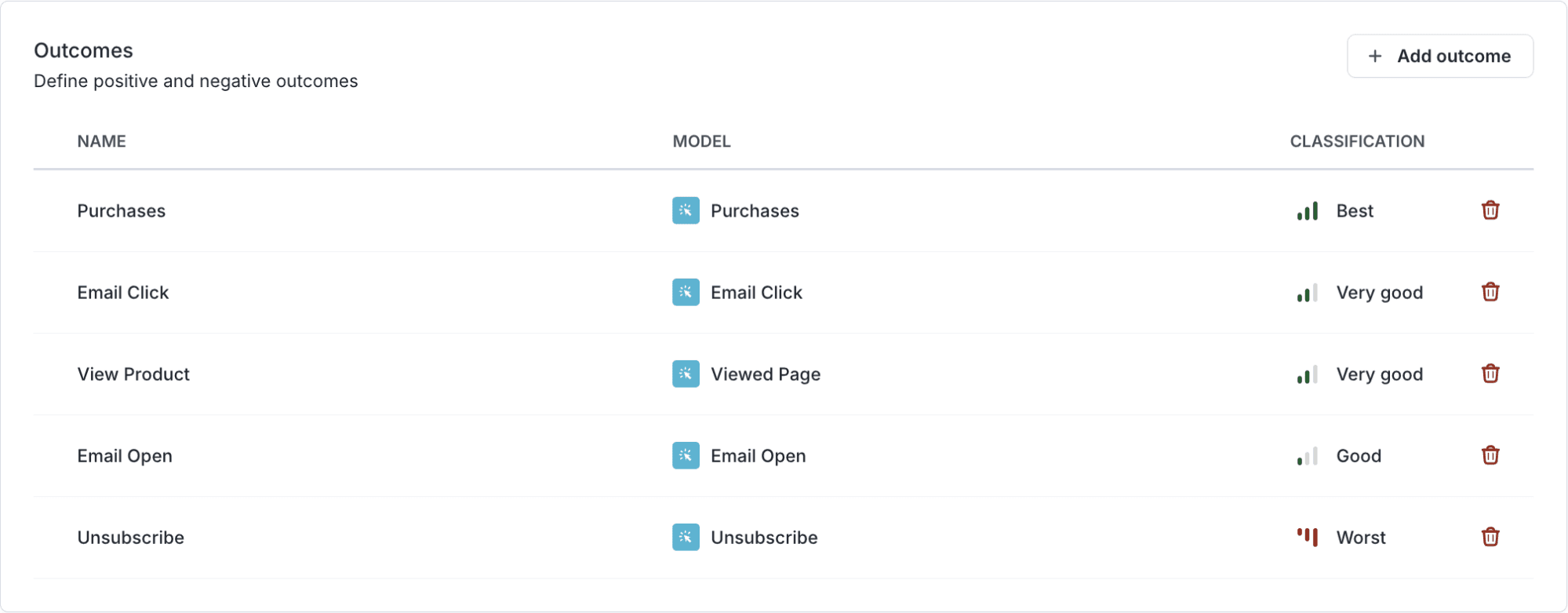
As part of your goals, weight outcomes for AI agents to optimize for.
Then you authorize actions the AI agent is permitted to take (or not take). Actions include content and product recommendations, offers the agent can use, as well as factors like the maximum message frequencies that are permitted or eligibility of different offers and campaigns.
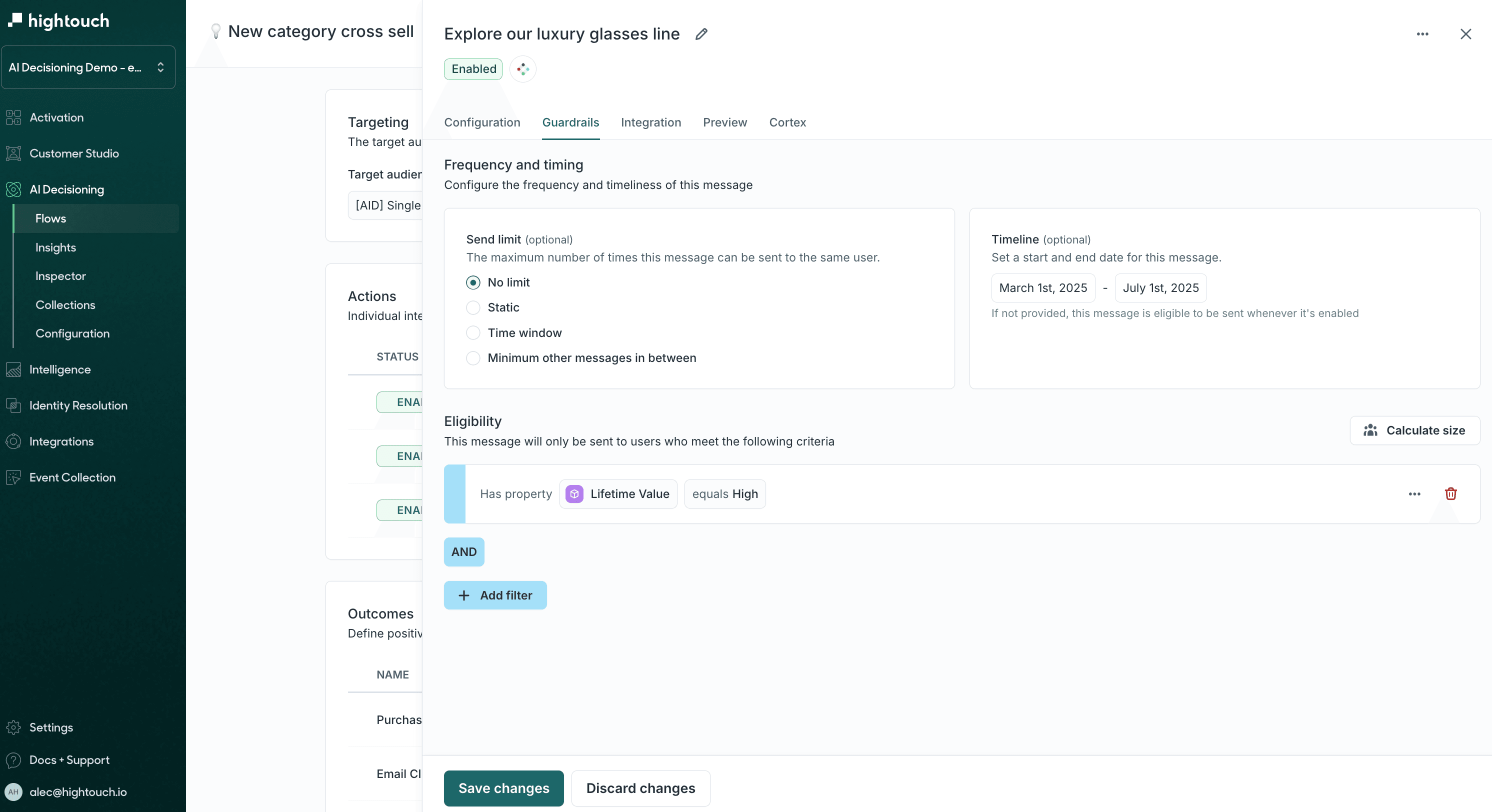
Set guardrails, such as frequency limits, to guide the AI agent’s actions.
Finally, AI Decisioning uses reinforcement learning to determine the best experiences to deliver each of your customers on a 1:1 basis, continuously experimenting, learning, and getting smarter over time. This means there are far more variations and experiments across a customer base than standard A/B testing could ever achieve. The major benefit is that the system learns faster and can find insights you would otherwise never discover.
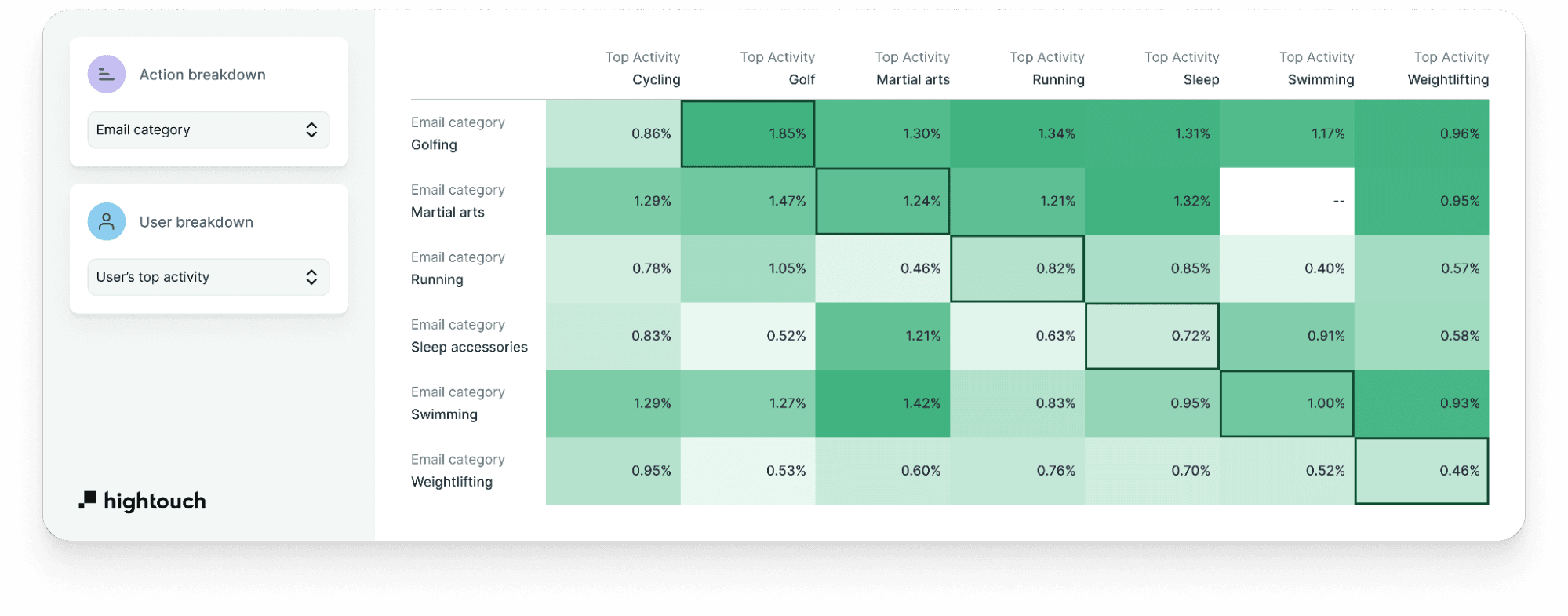
Correlations between message topics and user activities lead to cross-targeting opportunities.
Because every bulk campaign you send is now much more relevant, AI Decisioning drives greater performance and incremental lift across the goals you define. It has a broader impact, though. Through its experimentation at scale, you get a new source of insights to help you learn and uncover hidden opportunities within your customer base.
Real results from AI Decisioning
WHOOP—a wearable health and fitness company—used AI Decisioning to drive 10% lift in cross-sell conversions with email campaigns. Just as importantly, though, they gained more insights while using AI Decisioning for two months than from a full year of manual experimentation. For example, they discovered new opportunities when they saw that martial artists regularly clicked through on messages related to swimming. Insights like this have enabled them to improve their lifecycle marketing and create new non-digital opportunities.
“With AI Decisioning, we saw a significant lift in our cross-sell campaigns within just 6 weeks. It’s transformed our team’s focus from manual tasks to high-impact strategic work.”
Aoife O'Driscoll
AVP Lifecycle Marketing at WHOOP
The shift to AI-powered batch emails is one of the most significant opportunities in email marketing today. By moving beyond the false choice between scale and personalization, you can transform a standard, often forgettable marketing program into an engine for customer engagement and revenue growth.
The technology is here. The question isn’t whether to enhance your batch emails with AI Decisioning but how quickly you can begin.






